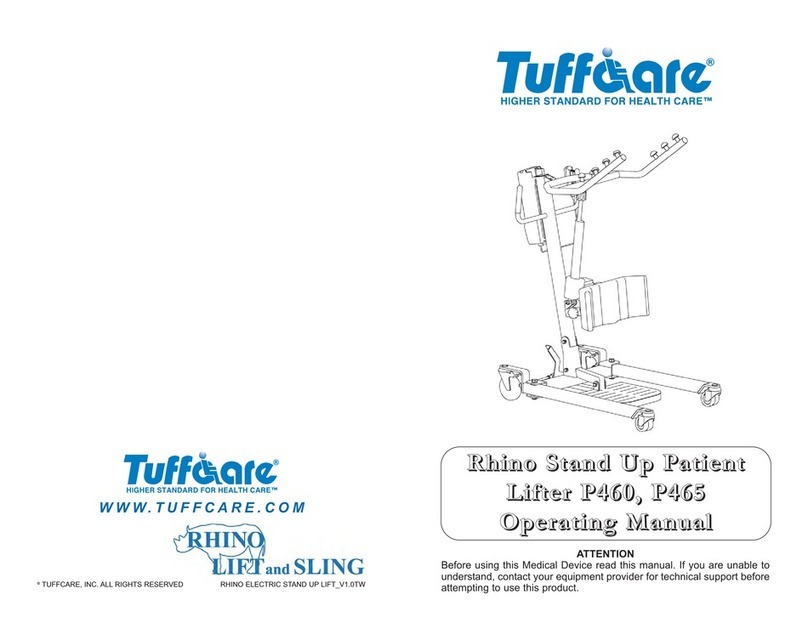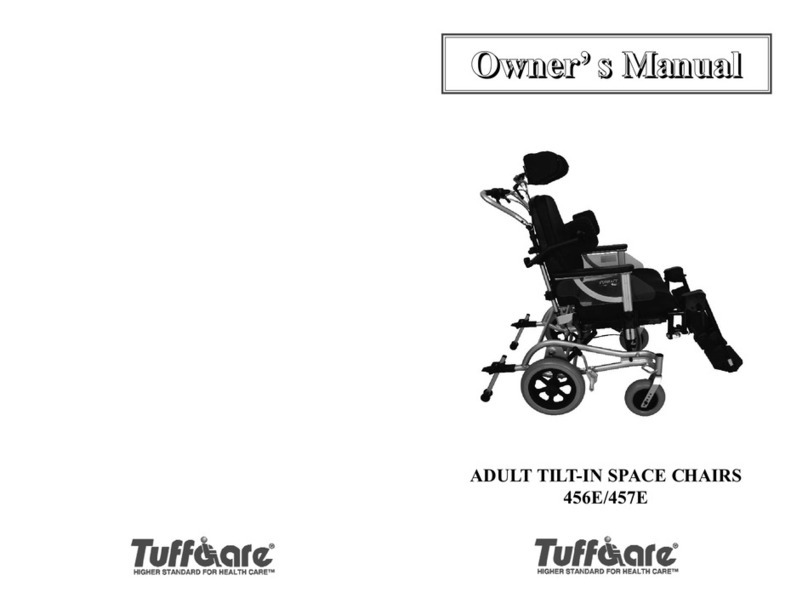
67
RHINO STAND UP PATIENT LIFTER P440 and P445 RHINO STAND UP PATIENT LIFTER P440 and P445
WEIGHT LIMIT
DO NOT exceed maximum weight limit of the patient lifter.
The weight limit for the stand up lifter is 350 lbs.
ASSEMBLING THE LIFTER
DO NOT over-tightens mounting hardware. It will cause a
damage of mounting brackets.
USING THE SLING
Be sure that sling is properly attached on sling holders before
the patient is removed from a bed, chair or any objects.
If the patient is in a wheelchair, secure the wheel locks in place
to prevent the chair from moving forwards or backwards.
OPERATING THE LIFTER
Prior to first, make sure that battery is being fully charged.
Always use the handles to move the lifter.
LIFTING THE PATIENT
Before positioning the legs of the stand-up lifter around the
patient, make sure that the patient’s feet are out of the way of
the foot plate, otherwise injury may occur.
Adjustments for safety and comfort should be made before
moving the patient. Patient’s arms should be outside of the
sling straps.
Before lifting a patient from a wheelchair, bed or any objects,
slightly raise the patient off the object and check that sling
attachments are secured.
During transfer, with the patient suspended in a sling attached
to the lifter, DO NOT roll caster base over uneven surfaces that
would create an imbalance of the patient lifter and could
cause the patient lifter to tip over. Uses handle on the mast at
all times to move the patient lifter.
GENERAL GUIDELINES contains important information for the
safe operation and use of this Medical Device.
SECTION 1
GENERAL GUIDELINES
Check all parts for shipping damage before using. In
case of damage, DO NOT use the equipment.
The TUFFCARE patient lifter is NOT a transport
device. It is intended to transfer a patient from
one seated surface to another (such as a bed to a
wheelchair).
DO NOT attempt to transfer, the user must be
assessed by a qualified professional. Thoroughly
read and fully understand the instructions in this
Owner’s Manual,
TUFFCARE Stand up and Transfer slings are
specifically designed to be used in conjunction with
TUFFCARE patient lifter. Slings and accessories
designed by other manufacturers are not to be
utilized as a component of Tuffcare’s patient lifter
system.
The stand up lifter is intended to be used for patient
within weight limit indicated for the lifter. DO
NOT attempt to lifter more than the weight limit
indicated.
1
2
3
4
5
WARNING































